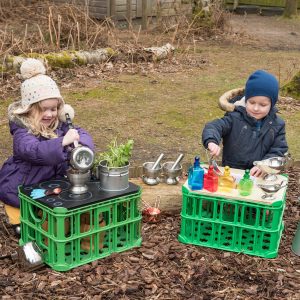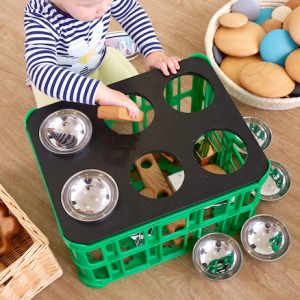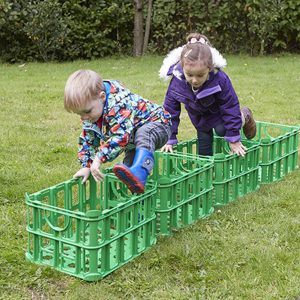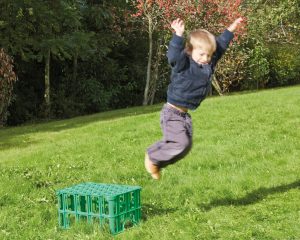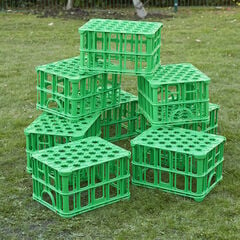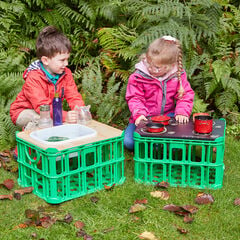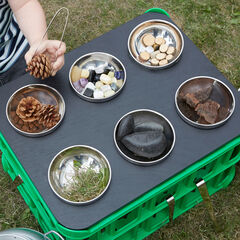Creative Crates – a staple for any early years environment
I love open ended resources that spark children’s natural curiosity to explore and fuel their imaginations. So for me these strong, safe, multifunctional creative crates are a staple for any early years environment.
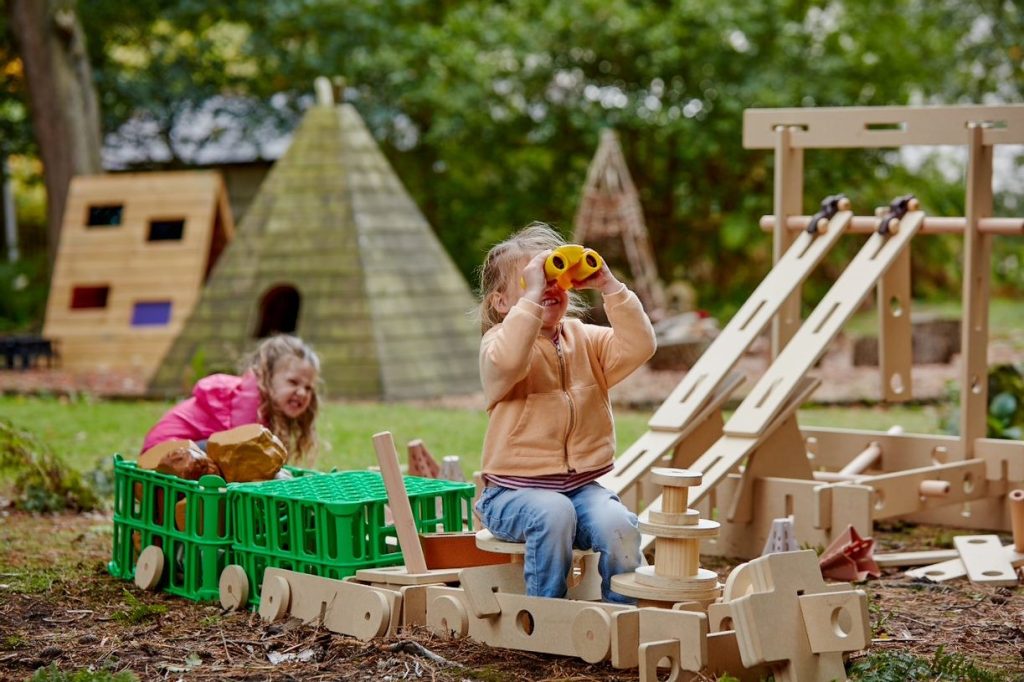
Crates are an ideal resource for children from the age of three. At this age, children love to play games of make believe and as their speech can be understood by others, they begin to share and enjoy playing in groups to solve problems. I would have these crates out in my setting and enjoy watching what the children do with them.
Things to consider when using crates
- What extra resources can you get out to provide enhancements?
- Question and prompt the children to draw out extended learning opportunities
- When providing children with an open ended resource such as the creative crates, observe how individuals interact with them differently. What are their interests?
- How do the children prefer to use them? Children are the experts of play and often have better ideas than any adult!
Some children, especially the younger ones, sometimes need ideas, provocations and encouragement to be interested, confident, and creative when exploring their learning. It is good to have a bank of ideas of how to use crates creatively to target specific areas of development.
Here are some ideas that you may like to try:
Portable storage containers
- Try using them as portable storage containers for specific resources. This can be handy when on the move outside. It can help to separate individual children’s resources. Also, turn them over to use as seating for outdoor circle times etc. Children can learn to be responsible for their own set of resources and independently unpack/pack away into the crates.
- Create a sorting activity by labelling the crates with pictures of resources. Activities such as this target their growing independence alongside their ability to sort and notice patterns.
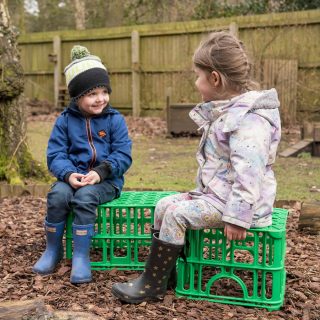
From small world play to other purposeful creations
Why not use the crates on their side to create different small world play provocations or for other purposes too? Some ideas may include:
- Designing generic dolls houses or villages (using planks for the roof), or dens to play in.
- Build book areas or libraries for our favourite reads.
- Create display ‘shelfies’ to spark interest in a particular subject or to showcase the children’s interests.
- Make bug hotels and nature dens. What will the children need to include to make habitats for the different types of wildlife?
All these ideas are focused on supporting our children’s communication & language skills, their ability to develop pretend play, exploring and investigating different materials, and to play with increasing confidence.
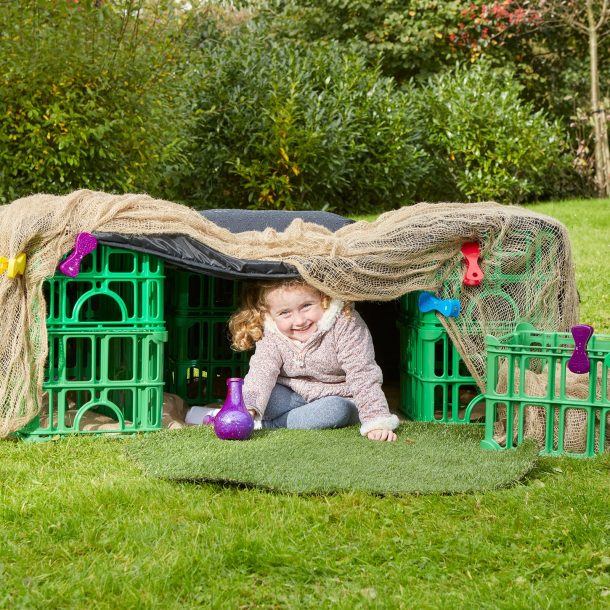
Exploring with the crates
- Children can learn about cause and effect by using the crate as a giant sieve to scoop with. Hide objects in the crate, bury in sand and shake to reveal the hidden items.
- Incorporate them into your outdoor role play or mud kitchen area by adding a sink topper for pot washing or alternatively, why not add toppers to a crate to turn it into an oven to bake mud pies or mix sand soups.
- Transform a crate into a portable posting station where children can explore and follow their schematic interests such as dropping or posting objects through the different sections.
- Can the children use the shapes and patterns in the crates to create marks and imprints in paint, sand and mud? What shapes can they see? What textures can they create?
All of these ideas focus on children’s knowledge and understanding of repeated actions and how things work, whilst exploring different properties.
Developing motor skills
A simple crate can become a great tool for learning across all areas. Here are some more ideas of how we get can creative with crates:
- Add open ended crate tops such as chalk boards for mark making activities or develop fine motor skills by weaving and printing with clay or play-dough.
- If you have a wheelie board or interlocking scooters, why not connect the crates to create trolleys, carts, or vehicles for pushing and pulling?
- Create obstacle courses and large scale construction play by adding planks of wood, tyres and other loose part materials.
These ideas support the children’s ability to jump, climb, develop manipulation and control, experience forces such as push or pull – all helping to develop fine and gross motor skills.
Ideal for indoors and outdoor learning
I don’t limit these crates to outdoor use only. I bring these inside for role play purposes, sorting activities and as a general loose part resource for the children to use in their own creative way. In my experience, children use them differently in an indoor environment.
Creative crates in action
A great example of the power of these simple crates was seen whilst using them with one of the little ones. He spent some time looking at and exploring the star shaped patterns on the crates. He then went and found the projector and with support projected the star patterns onto the wall and was fascinated by this. It led to lots of questioning about light and shadows, and experimentation with blocking out then revealing the stars. This is a fantastic example of allowing children the time, opportunity and space to follow their own curiosities through staple, open ended resources such as the creative crates.
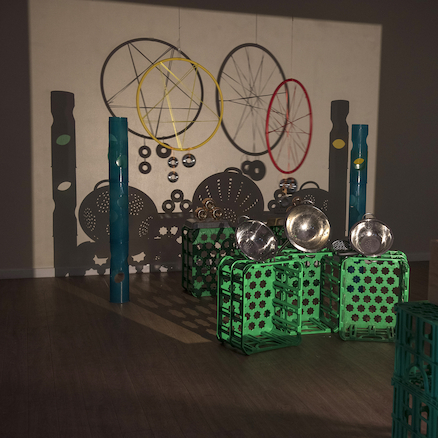
Thank you to Kelly at Tinker Tent for sharing her thoughts and ideas with us.



